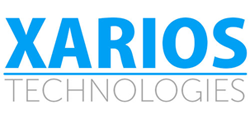Overview
When calls comes into the the outside number may contain extra digits or not be complete, for example contain 141 to suppress caller ID, contain ARS (least cost routing) digits or a user could have dialed a number without the local area code. The system can be configured to "clean" the number before it is stored to provide a consistent format for all numbers.
It is necessary to configure the dial plan to match the configuration of the .
As a minimum the Outside line prefix should be configured.
Configuration
To configure the dial patterns:
- Access the Site Settings -> Dial Plan configuration section.
- Enter the settings used to "clean" the number in the Call history section.
- DDI Prefix to add: When an incoming call is received on a direct dial number the telephone network provider often only sends the last few digits of the DDI/DID number dialed. For example if the number 01617123456 is dialed the telephone system only receives 123456. In this case 123456 will be logged against the call. To add the DDI prefix you can enter in the preceding digits for the rest of the number dialed, 01617 value for this example.
- Caller ID prefix to add: When dialing a local outside number the system will only receive the number from OAI without the local area code. Entering this will insert this code as a prefix to any dialed numbers not containing the area code. For example if your local area code is 0161 then you would enter this. If the number 1234567 is called the system would convert this to 01611234567.
- Caller ID prefixes to remove:When outbound calls are made, unwanted prefix digits can be removed by adding the prefixes into this section. Multiple entries can be entered by separating them with a comma. For example if the was configured with 8 as the Outgoing line digit and users regularly dial 141 to suppress CLI, enter 8, 8141.
- Enter the settings used for the dialing out rules into the Outbound dial patterns section.
- Country: Select the country from the drop down menu that the resides in and this will put the default settings in for the country that has been selected.
- Outside line: Select the digit that is used to access an outside line on the .
- Local area codes: Enter the local area code for the area that the provider's trunks are installed.
- Local override codes: Enter the local area codes for local calls that are treated as long distance calls. This is required when there are certain numbers with a local area code that must be dialed as a long distance number.
- Max extension length: Select the maximum length of an extension on the ; by default this is set to 4. If this is not set correctly then dialing an extension may result in an external call being made. This allows Phone Manager users to dial outside numbers without having to enter the outside number prefix.
- Service codes: Enter the service codes that are dialed from the . Any numbers here will be dialed as though they are an outside number, i.e. if 911 is dialed then 8911 will actually be dialed with the outside line digit prefixed.
- Toll digit: Select the toll digit, in the UK the toll digit should be set to 0 and for the US this should be 1.
- National number length: Enter the number of digits for a national telephone number in the country where the is installed. This should include the local area code and the toll digit.
- International code: Set the country code of where the resides, for example: 1 for North America or 33 for France.
- International outbound code: Set the international outbound code that is required to dial international numbers excluding the code to obtain an outside line, for example: 011 for North America and 00 for European countries.
- Dial toll on long distance calls: Enable this if the toll digit should be added to long distance calls.
- Dial toll on local calls: Enable this if a toll prefix should be added to all locally dialed calls.
- Dial hash: A pound / hash (#) can be automatically added to the dial string to send the call to the immediately without waiting for the inter digit timeout.
- Dial primary local area code: Enable this option if local area codes should be dialed. If this is not enabled then when a number is dialed that has an area code it will be removed automatically unless the area code has been configured in the Local override codes section.

